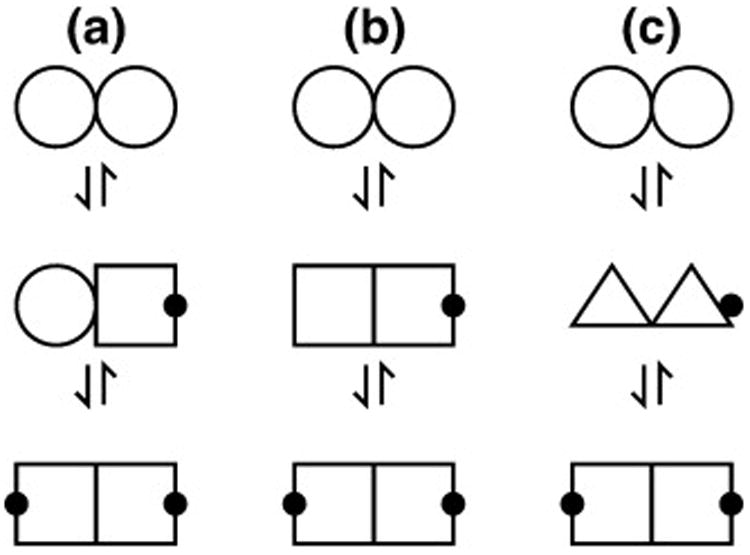Fig. 8.

Models for allostery in LC8 binding. Different polygonal shapes represent different conformations of LC8, and a black dot indicates an occupied binding site. (a) Two independent binding sites. Binding at one site does not affect the conformation at the other site. There are only two possible chemical environments, corresponding to the occupied and unoccupied states. (b) Binding coupled to a global conformational change, such as the shear motion. There are three possible chemical environments: the occupied state, the distinct unoccupied state of the free form, and the distinct unoccupied state of the singly bound form. (c) Unique conformation for the singly bound state. There are four possible chemical environments—two corresponding to the same apo and bound states from (a) and (b) and two more from the singly bound state that, lacking symmetry, provides two environments, neither of which is equivalent to the apo or bound state. Only for model (a) are the affinities necessarily equal for the first and second binding steps.
